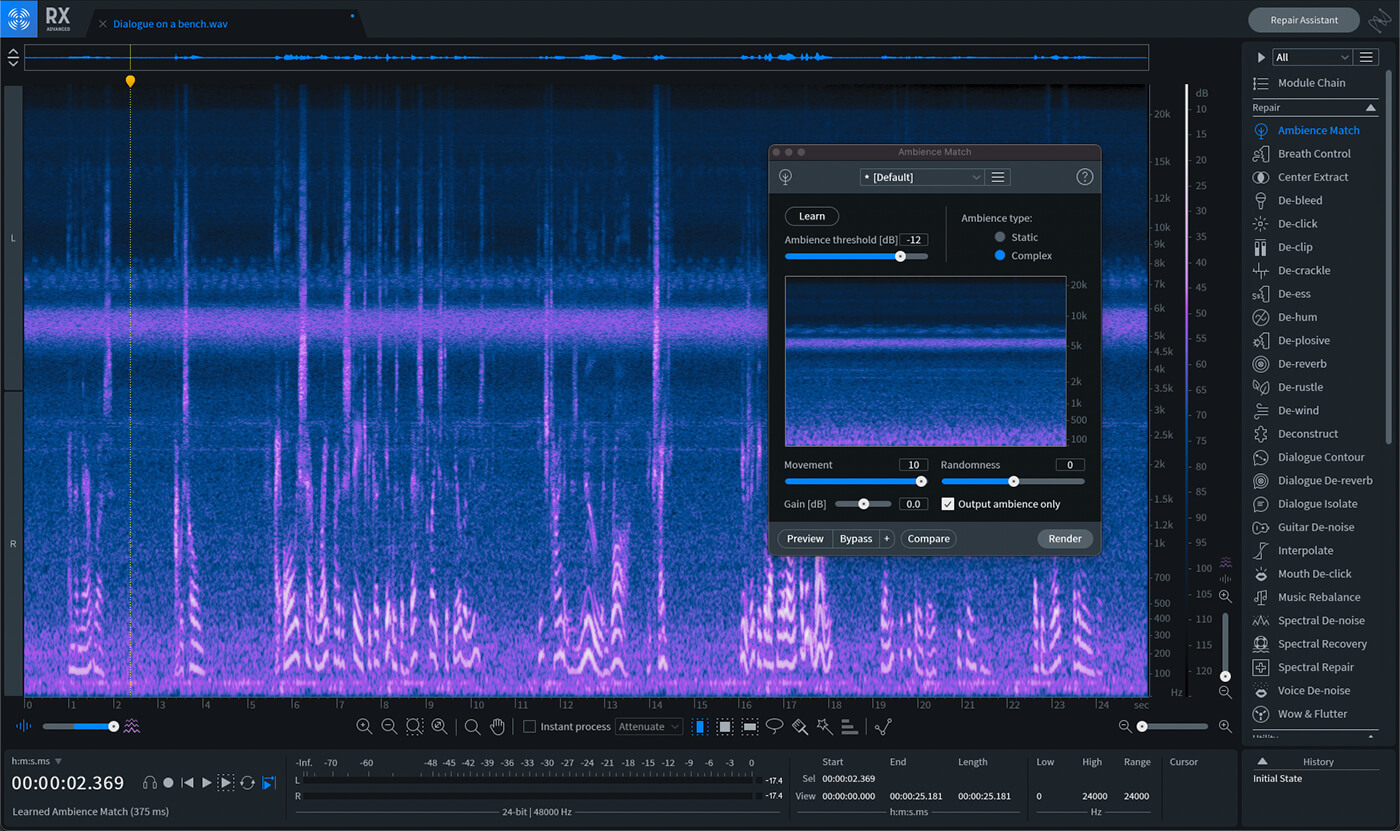
An overly polished sound with crispy, expensive high end is less important than character, mise-en-scene, and intelligibility. Mouth De-clickĪ dialogue track for a film, podcast, or radio broadcast holds different considerations for mixing. Also, on the occasions where De-plosive might add an artifact, you can easily take it out with De-click. In RX Audio Editor, tweak the settings to treat the specific plosive, or run the process subtly a couple of times (this can help in certain situations). Here it pays to be selective: try to AudioSuite the plosive, or take it over to the standalone app if you’re using Logic or a similar DAW.


Other times, the dynamics of the pop don’t trigger the settings you’ve utilized for other instance. Sometimes, one pop “hits” higher up in the frequency spectrum than another. However, not all pops in a track are the same. I would insert the plug-in before any vocal denoising, EQ, or compression. If you have a vocal with the occasional pop, running De-plosive as a plug-in process should work most of the time.
#Using izotope rx 6 as a plugin pro#
If you’re working with a track that only has hum some of the time, use in standalone or AudioSuite (in the case of Pro Tools) to better adjust the problematic region. It works well as a plug-in for tracks that have a consistent hum. I would advise using De-hum similarly to Voice De-noise. Depending on your DAW, you can use an external editor, RX Connect, or, in the case of Pro Tools, simply apply the AudioSuite to the region that needs fixing.

Should the noise change throughout the recording-if the hard drive suddenly whirrs louder, for instance, or if the fridge compressor kicks on mid take-it’s better to engage the standalone app for de-noising.


 0 kommentar(er)
0 kommentar(er)
